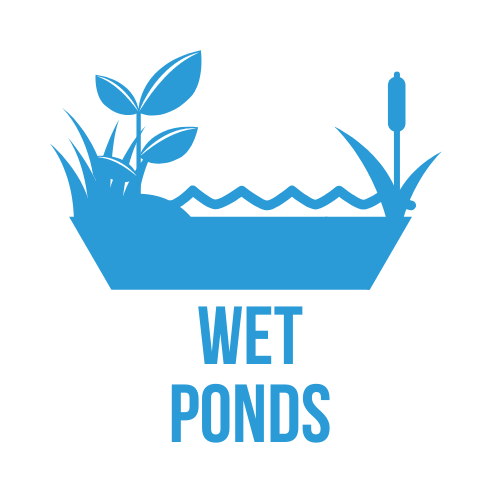Resources
ISWMM Chapter
ISWMM Chapter - Wet Detention Pond
ISWMM Chapter - Extended Dry Detention Pond
Design Checklist
Design Checklist - Wet Detention Pond
Design Checklist - Extended Dry Detention Pond
wet ponds
Description
A wet pond (or wet detention basin) is a constructed pond that supports a permanent pool of water designed to capture and temporarily store additional runoff from upstream areas. This practice is traditionally installed for flood control but can also improve water quality if a multi-stage outlet is included in the design.
Stormwater enters a forebay where any remaining sediment will settle before entering the main pool. Water is held in the main pool long enough for wetland plants to consume excess nutrients and pollutants. As the water rises during a storm event, the top clean layer is slowly released through a series of internal stoplogs and orifices to slowly drain out of the pond and into the nearest body of water.
Benefits
Dirty stormwater will be intercepted before it reaches a stream or lake. The forebay and main pool slows and temporarily holds water to reduce flashiness and erosion downstream. Pollutants will be removed through settling and biological uptake through plants. Wet ponds support wildlife and habitat, as well as recreational opportunities. They can be constructed as central features within parks or other open spaces by including trails, fishing piers, and walking paths in the design.

